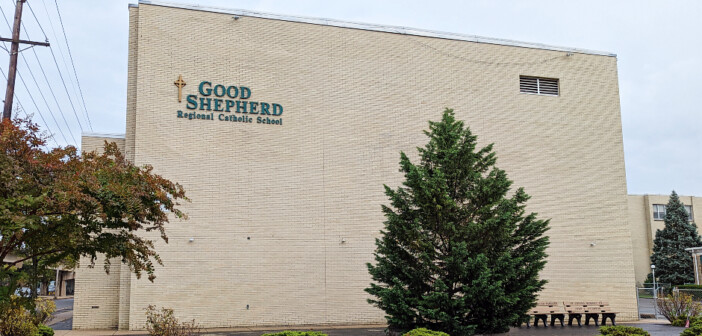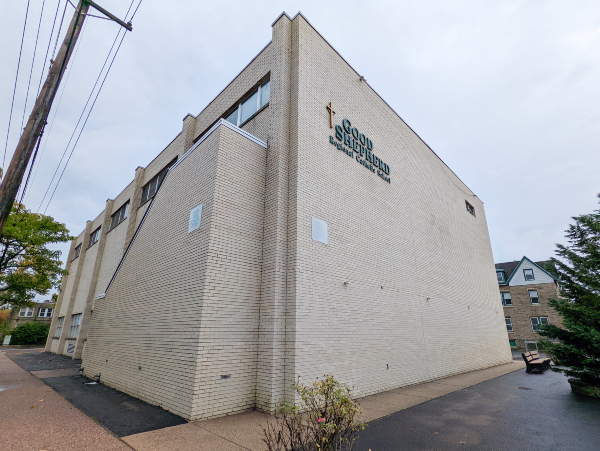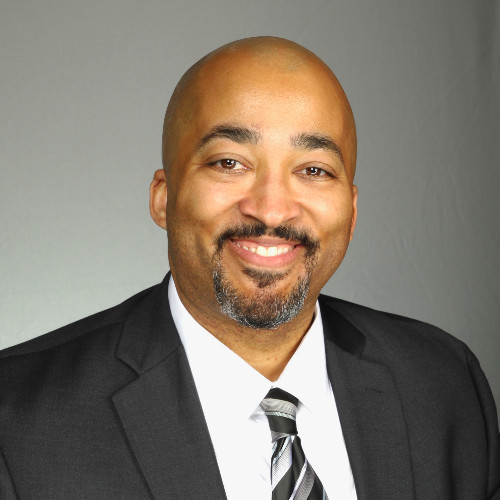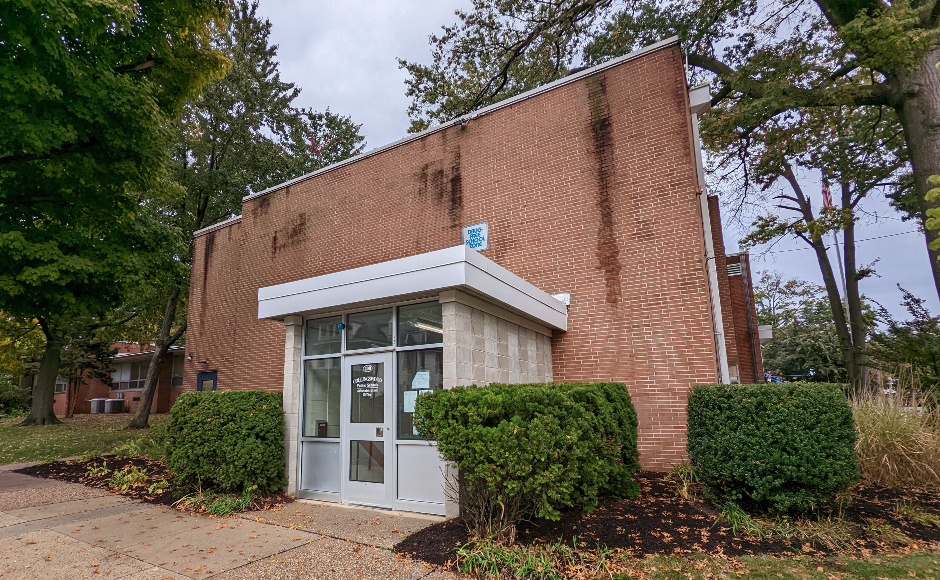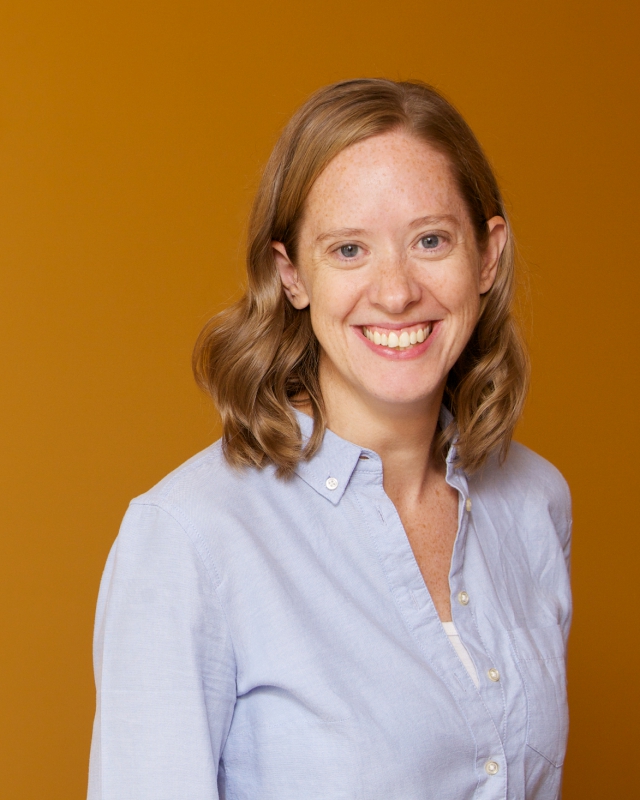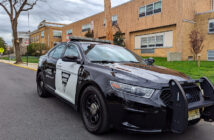Terms of the deal are not yet complete, but talks with the Camden diocese have been ongoing for nine months. The facility could add much-needed space to a district that is over capacity, officials say.
By Matt Skoufalos | October 13, 2022
As part of a strategic plan that involves a top-to-bottom evaluation of its portfolio of facilities, the Collingswood School District is seeking to acquire additional space by leasing the recently shuttered Good Shepherd Regional Elementary School.
No deal has yet been finalized, but after nine months of discussions with the Roman Catholic Diocese of Camden, the two sides are close to terms.
If the district doesn’t broker an agreement for this property, Collingswood Superintendent of Schools Fredrick McDowell said it must pick up additional classroom space to accommodate the growing population of school-aged children in the community, and soon.
“For over a decade, we have been over capacity in our elementary schools,” McDowell said.
“Based on our current slate of facilities, our pre-K-to-5 capacity is 715 students,” he said. “We have roughly 947 children.”
In 2019, the district projected a student population of 913 students by 2022. Collingswood has exceeded that original projection by 34 students, notwithstanding another 288 borough children who are eligible for local preschool services, but are unenrolled for want of capacity.
In total, some 338 children are affected by the lack of educational space throughout the district, McDowell said.
“If we had a building for them, we could serve them,” the superintendent said. “Our goal is to make sure we have space for every eligible child who wants to participate in preschool.”
Beyond providing for its youngest learners, the district must also create more work spaces for its professional staff, McDowell said. Acquiring additional administrative or operational spaces could free up room for educational purposes, or — in the case of the professionals that work in the Board of Education offices — create an environment more suitable for their job duties.
“The Board office is not family-friendly,” McDowell said. “We’re in a basement. If more than five people arrive at once, they’ve got to stand outside.
“We have nontraditional workspaces across every school,” he said. “Our efforts are to try to reduce those nontraditional workspaces to free up as much classroom and learning space as possible.
“When we think about occupational therapy, physical therapy, speech, psychology, social work, and counseling, we also need to make sure that we have cohesive spaces for those services.”
‘Mission alignment’
Less than a block away from the current district offices on Lees Avenue, Good Shepherd closed for good in June 2020, with the diocese citing “years of dwindling community support in the form of declining student enrollment and local fundraising.”
It was one of five such Catholic schools to be closed locally amid the novel coronavirus (COVID-19) pandemic despite some parents seeking alternatives at a time when public schools were closed for in-person learning.
An agreement with Collingswood would see the facility restored to use as an educational center, which the diocese favors as well, McDowell said.
“The legacy and original intended purpose of the building was to bring education into the community,” he said.
“To have an opportunity in a borough where land is not available, and educational facilities are extremely costly to construct new, this seemed like a really good marriage.
“It’s not just a conversation about dollars and cents,” the superintendent said. “It’s also about mission alignment, purpose, and value to the community.”
If the deal is finalized, Good Shepherd would automatically become both the newest and one of the largest buildings in the district, despite being about 50 years old and requiring significant updates before it could be used for regular educational purposes. It also would become the only elementary school in Collingswood with a full-sized gym and a cafeteria with onsite kitchen.
“Our buildings are between 60 and 100 years old,” McDowell said. “Our largest elementary school is Tatem; it’s about 27,000 square-feet. Good Shepherd is about 30,000 to 40,000 square-feet.
“We could put all of Tatem in that building and still have space left over,” he said.
Among the terms being negotiated with the diocese as part of any lease agreement are those outlining necessary remediations to the property, which McDowell said “for all intents and purposes has not been updated in 50 years.
“The district will be held accountable to 2023-24 or 2025 standards before students can receive educational services in that building,” the superintendent said. “Work needs to be done before we can get a new certificate of occupancy.”
That work could be considerable. McDowell said that Good Shepherd still has its original roof and windows, and would need updates to its HVAC and furnace system, as well as accessibility improvements. The superintendent also hypothesized that the structure may have environmental concerns.
“Once we get in and start peeling back the onion, buildings and grounds will let us know timeline and usage,” he said.
‘Immediate relief’ for district professionals
What Good Shepherd could offer the district right away is office space for district professionals who desperately need it.
Collingswood School Board member Matt Craig said the campus could provide “immediate relief” for staff at the Collingswood middle and high school campus, while offering flexibility and opportunities to open up storage and community space throughout the district.
“I don’t see this as a sixth K-to-five elementary school,” Craig said, “but it does give us flexibility, where we’re not interrupting learning if we had to move kids over to extend the lifecycle of one of our other buildings.
“One of the big things that was attractive to the diocese in partnering with us is that we have a great buildings and grounds crew that keep these buildings working,” he said. “That was a major cost for them, and it’s a good partnership in that sense. We want to be good neighbors working together.”
The ultimate goal of putting in the time and effort to revitalize Good Shepherd would be to use it as an educational space, and Collingswood School Board President Regan Kaiden said the district is brokering a lease agreement that would contemplate eventually buying the property.
Although its operations budget has capacity built in to absorb the cost of a short-term lease, the cost of acquiring and renovating the school to get it up to classroom standards would require the district to pass a bond referendum, Kaiden said.
“We built a lease into the budget,” Kaiden said. “In order to purchase the building and make it student-ready, we have to go out to referendum for that. We want there to be no surprises down the road.”
Both the board and the superintendent stressed that, although the former Catholic school seems to be the best fit for the needs of the district, their search for new properties in the borough was not confined to Good Shepherd.
“We looked at other things that could potentially be an educational space in town,” Craig said. “One, it’s limited. Two, if they’re interested in selling, the conversations never went anywhere, or it wouldn’t give us enough classroom space for a building.”
Were the district to eventually acquire the property, it would be within the context of other decisions about its educational and operational priorities. Kaiden said the additional space could “seriously open up” discussions about grade-level alignment — an educational model that groups all elementary-school students throughout the district into buildings by grade instead of the pre-K-to-fifth-grade layout of its current, neighborhood schools.
“Maybe [Good Shepherd could become] a fourth and fifth-grade building, while keeping the rest of our schools a pre-K to third-grade possibility,” Kaiden said.
“We’re also looking for ways to relieve the special needs situation and make it more inclusive.”
“It gives us more flexibility to think through a lot of things,” Craig said.
“Those are conversations we want to have with the community sooner rather than later,” he said.
“We want to get more feedback before we make the final decision.”
At the same time, both McDowell and the Board are acutely aware that the district must address its needs for recreational and shared community spaces.
Those conversations are presently being held internally, together with the borough government, and in public sessions throughout the district, under the designation “Vision 2026.”
“We are committed to really talking with the community about what they would like to see before any final decisions about this project are made,” Kaiden said. “We want to make sure we’re hearing from the community about what makes sense, and that starts with these meetings.”
The board president described the possibility of making “phased improvements” to grounds at the middle-and-high-school campus that could include “an initial investment with a referendum.
“They’re early conversations at this point,” Kaiden said. “The borough and school are both on the same page that there is a huge need for it in our community, and we’d both like to figure out a way to make it happen.”
The district is also cognizant of the need to solicit in-depth, meaningful community input ahead of the development of any referendum in the wake of its last facilities proposal in 2018, which voters rejected.
“We’re not ignoring what took place back in 2017-18,” McDowell said. “If anything, we’re attempting to not repeat the missteps or the inconsistent messaging that took place then by taking a different approach.
“Before we come to the community with any proposal or any request for anything, we’re engaging our community,” he said. “We’re a different organization. The conditions are significantly different. We’re not in the same space.
“The borough and the district is in agreement: our collective goal is to figure out how do we maximize the — sports, community arts — in order to meet the demand?” the superintendent said.
“Right now, the demand is higher than the spaces that we have available. We’re trying to think creatively about how we do that to support the arts; the community.
“Our response is not ‘Should we do that?’ but ‘How do we do that in the most efficient way?’” he said.
Please support NJ Pen with a subscription. Get e-mails, or follow us on Facebook, Twitter, and Instagram.

